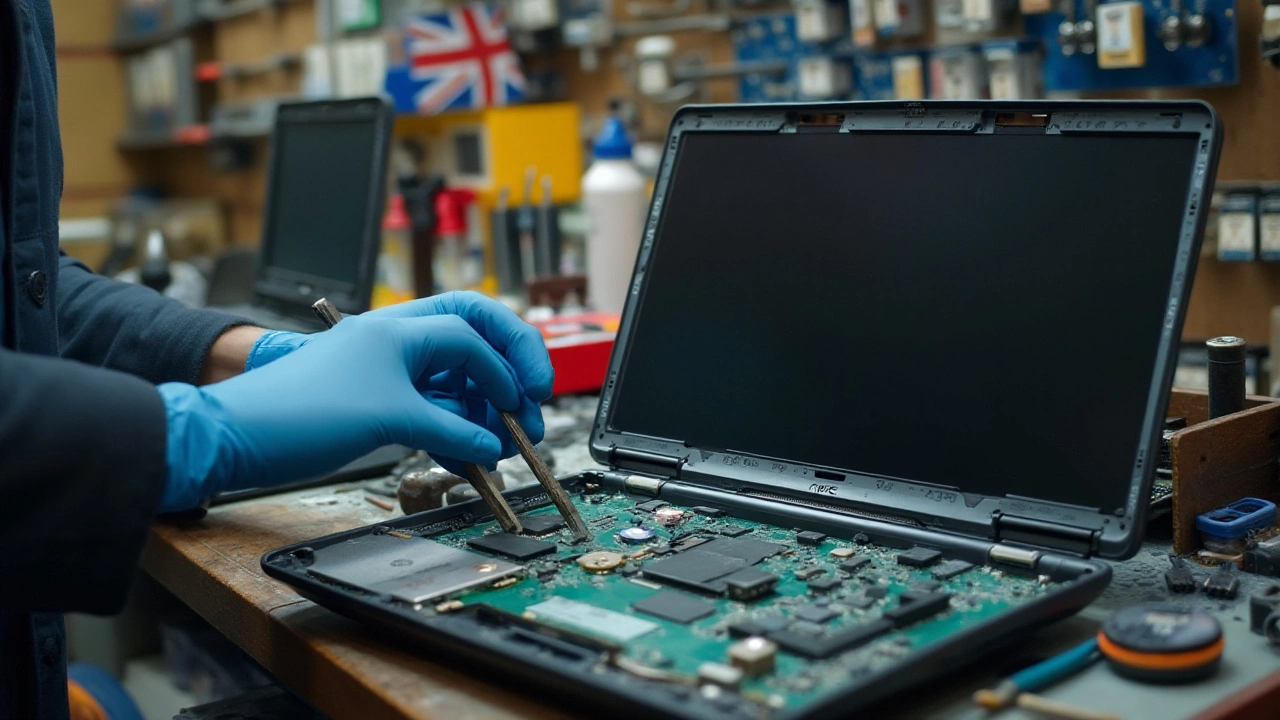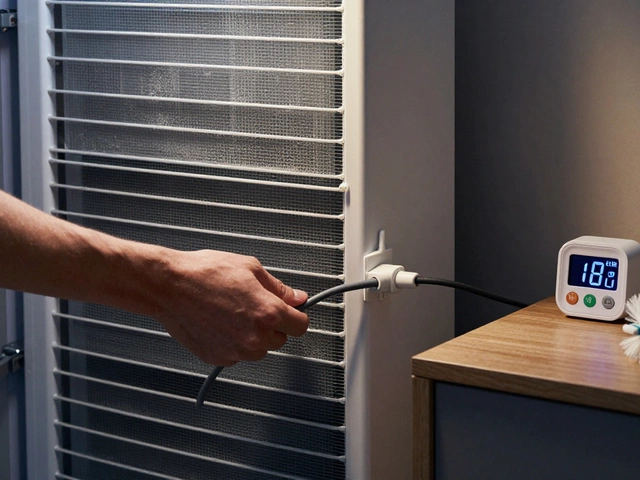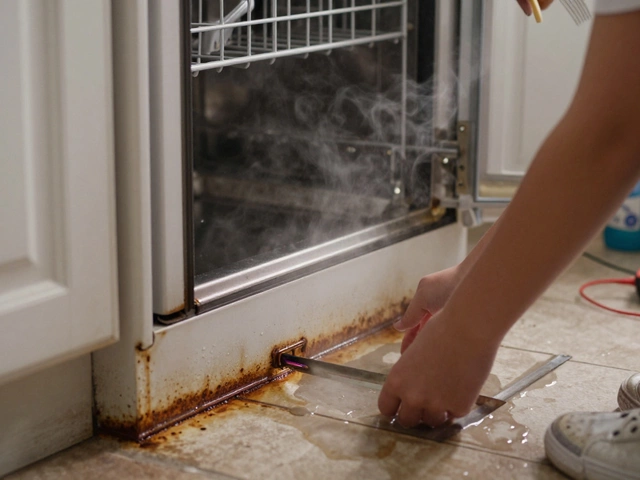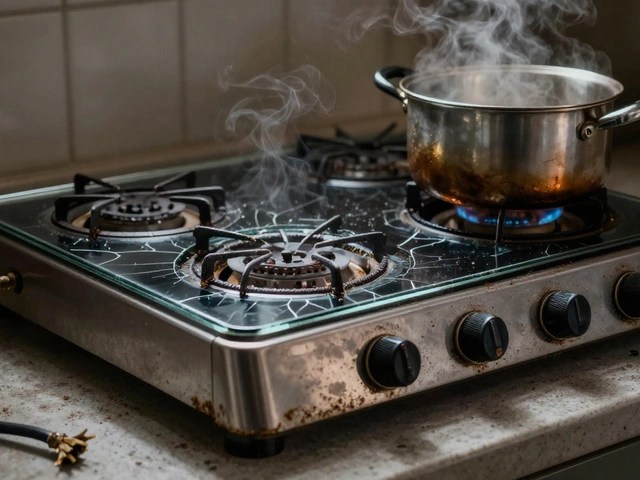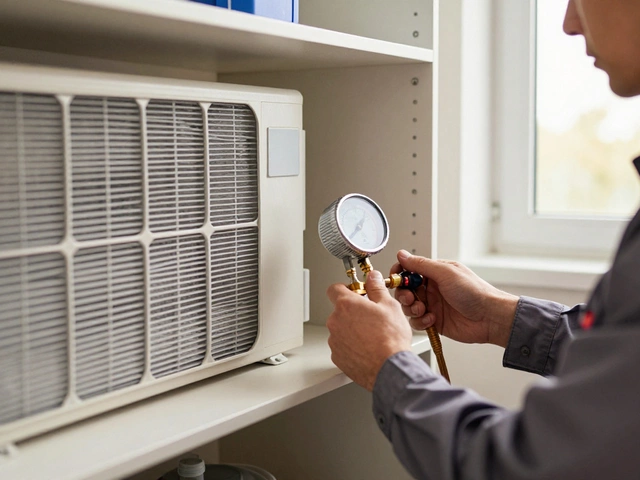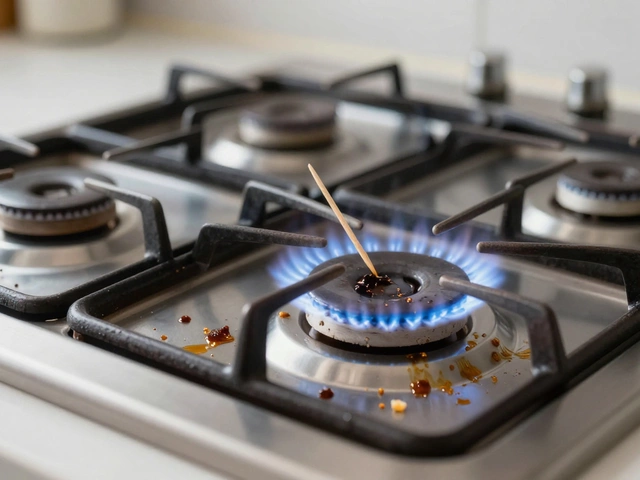Laptops, while extremely convenient, can sometimes be a bit of a conundrum when they start malfunctioning. It's not just about the effort to get them fixed, but sometimes the towering expense that comes along or you can say tags along with repair costs. Almost everyone who's ever owned a laptop has, at some point, wondered: which part is the most expensive to repair?
In this exploration, we will delve into common yet costly laptop repair scenarios. We'll navigate through the delicate intricacies of the ever-so-fragile laptop display, the intricate maze of the motherboard, and the powerful yet pricey graphics processing unit.
Moreover, understanding why these repairs are costly and how one can steer clear of frequent and expensive damages is an empowering bit of knowledge. So, let's dive in and see what makes your laptop's pricetag go sky-high during repairs.
- Laptop Displays: Fragile and Costly
- Motherboard Repairs: The Heart of the Expense
- Graphics Processing Unit (GPU): A Pricey Component
- Tips to Avoid Expensive Repairs
Laptop Displays: Fragile and Costly
When it comes to the anatomy of a laptop, the display is arguably its most delicate and vital organ. This is often the first component to suffer damage due to its fragile nature. Whether it's a minor crack from a slight drop or complete shattering from a more severe impact, the cost to replace or repair a laptop screen can be significant. This fragility, combined with sophisticated technology embedded within modern displays, can elevate repair costs rapidly. You'll find that even the slightest mishap can lead to a repair bill running into several hundred dollars, more so for premium models. Laptop displays vary in terms of technology, from LCD to LED and OLED, each having its unique pricing structure and repair challenges.
Aside from the physical aspect, the high cost of repairing displays often comes down to the integration of touch technology in many modern laptops. Much like a smartphone, if the display involves touch capabilities, reparations can extend beyond merely replacing the glass. There’s the digitizer and other intricate parts involved, which all inflate the cost. Notably, highly sought-after brands may charge a premium for their screens solely for their name and reputation, adding an extra layer of expense. As reported by TechRadar, "the rise in advanced screen technologies like Retina and 4K ensures that replacements are not just a hassle, but also a luxury."
One common misconception is that replacing a cracked screen is a simple, DIY task. While certain tech-savvy individuals might pull it off, attempting to do so without proper expertise can lead to further damage. For instance, misalignment during installation may lead to additional issues that affect the screen’s functionality. Expert technicians have the right tools and methods to ensure proper fitting, not to mention the peace of mind that comes wrapped with a warranty. Given the expense involved, a professional touch is almost necessary unless you are very familiar with the process.
In many cases, opting for original equipment manufacturer (OEM) parts can drive costs higher than using third-party components. However, OEM parts are generally recommended to maintain consistent quality and screen performance. It’s not just about the display looking good; it’s also about resolution quality, color accurateness, and responsiveness—all core considerations when thinking about replacing or repairing those delicate screens. A commitment to quality regardless of cost could be the wiser choice if you heavily rely on your machine for professional work.
Interestingly, data shows that the average cost for a non-touchscreen laptop display replacement can start at around $150 and can soar well over $300 for high-end touch screens. Below is a sample comparison of typical repair costs for varying screen types:
| Screen Type | Average Repair Cost |
|---|---|
| Non-Touch LCD | $150 - $250 |
| Touchscreen | $200 - $350 |
| 4K or Retina | $300+ |
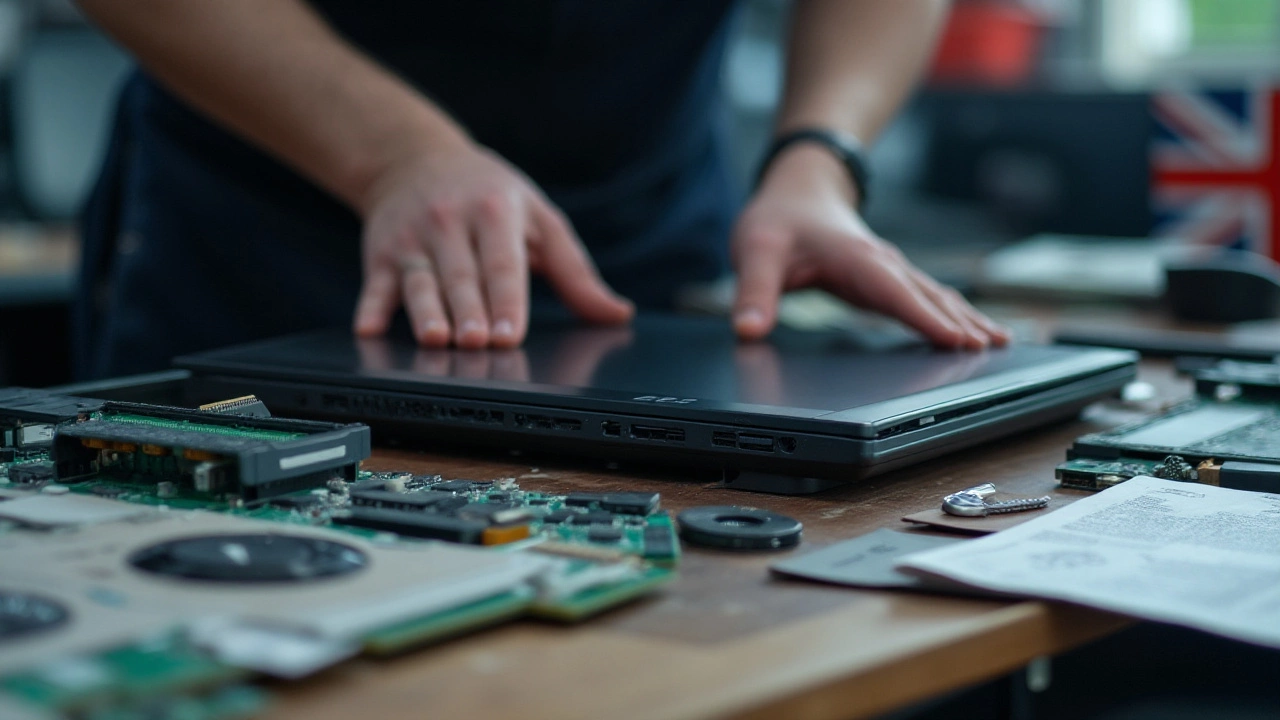
Motherboard Repairs: The Heart of the Expense
Many folks might not realize that within the sleek casing of a laptop, the motherboard is a pivotal component. Often referred to as the heart or brain of the device, the motherboard holds court over the laptop's essential operations. Its significance is hard to underestimate, but unfortunately, this also means that repairing it can rack up quite the bill. This isn't just because of the material cost but due to the labor intensity as well. The extent of connections and minute circuitry that technicians must handle to troubleshoot and repair these issues requires a practiced hand. This is why labor charges associated with motherboard repairs can soar, often making it the most expensive part of a laptop to repair.
One underlying reason for the high price of motherboard repairs lies in its complex structure. A standard motherboard hosts an array of components: the central processing unit (CPU), memory slots, storage interfaces, and various expansion capabilities, all sewn together like an intricate quilt of technology. Therefore, any malfunction necessitates careful diagnosis to pinpoint which part of this complex ecosystem has faltered. Unfortunately, unless you're a tech wizard, attempting a DIY repair could render your laptop incapacitated. Even a single misplaced effort can send ripples across the system, causing additional breakages.
To bring home just how immersive a motherboard repair can be, consider the statistics: a professional repair can cost anywhere between $150 to $500. It might appear daunting, but the cost depends on the brand and specs of your laptop. MacBooks and high-end gaming laptops usually charge on the heftier side due to proprietary components. On the other hand, let's not forget the role of supply chain dynamics; sometimes sourcing a specific part for your motherboard can make the price fluctuate. When you add labor to this mix, it's not hard to see why costs spiral upwards.
"The motherboard is often the most expensive component to repair, primarily due to its complex structure and the necessity for expert handling," states Julian West, a technician at Reliable Tech Solutions.
Anyone hoping to avoid such expenditure would do well to adopt some preventive practices. A straightforward tactic is ensuring your laptop has proper ventilation; overheating can lead to failures in the motherboard circuitry. Use a cooling pad if necessary and ensure dust doesn't clog the cooling systems. Handling your laptop with care is equally crucial. Shocks and falls might not just crack the screen — they can disrupt motherboard connections. Finally, when transporting your laptop, a sturdy and padded carry case can protect it from inadvertent impacts.
There's an old adage in prevention being better than cure, and this rings true with laptop repair. Being conscientious about potential threats and understanding the investment in your motherboard can not only save you money but also extend the life of your laptop significantly. If you face an inevitable repair, however, always consider professional assistance to ensure the longevity of your device post-repair.

Graphics Processing Unit (GPU): A Pricey Component
When it comes to laptop repairs, the Graphics Processing Unit (GPU) often stands as one of the most expensive components to fix or replace. This is because the GPU plays a crucial role in rendering all those beautiful graphics on your screen, especially in gaming laptops or those used for intensive graphic design work. The GPU not only manages images but also affects video and animations that require complex calculations, needing top-notch precision and power.
GPUs are typically soldered directly onto the motherboard in laptops, which makes their repair or replacement an arduous task requiring a specialist’s touch. Unlike desktops, where you can swap out a graphics card, a laptop’s GPU often requires intricate skills to disassemble and reassemble without causing further damage. This soldering aspect considerably raises repair costs since it often means replacing the entire motherboard rather than just the GPU itself.
Moreover, new generation GPUs such as those from NVIDIA's RTX series or AMD’s RX series boast unprecedented performance levels, and their prices reflect this technological leap. These advancements, while providing incredible graphics capabilities, translate into higher repair costs if things go awry. Once damaged, the choice might well end up between an expensive repair and purchasing a new device altogether, due to diminishing returns on the investment.
"The graphics card can cost nearly half of the price of some laptops—particularly gaming machines," states John Hensley, a senior technician from TechSource Solutions, highlighting the financial impact of GPU repairs. This price factor is compounded because the GPU also requires synchronization with other components, meaning any mismatch can lead to even more complications during repairs.
There's also a market factor to consider; the demand for powerful GPUs has skyrocketed in recent years, driven by crypto-mining enthusiasm and the expanded applications of high-end graphics in various fields beyond gaming. This demand inevitably leads to elevated prices as supply struggles to keep up, further inflating repair costs. Even simple mishaps like overheating can lead to thermal throttling that damages the GPU, underscoring the importance of maintaining good laptop cooling systems.
In terms of preventing these costly repairs, it is crucial to keep your laptop’s internal components clean and well-ventilated. Using a cooling pad for gaming laptops is often recommended to avoid heat buildup that can jeopardize the GPU. Routine maintenance, such as cleaning the fans and ensuring vents are unblocked, can prolong the life expectancy of this vital component and help avoid unexpected repair costs.

Tips to Avoid Expensive Repairs
As the saying goes, prevention is better than cure, and this holds especially true for keeping your laptop in top shape. The first line of defense is understanding that the way you handle your laptop daily greatly influences its lifespan and how often you'll need to shell out money for repairs. One might not ponder over it much, but flipping your machine open and closed with a bit of force is a recipe for disaster, especially for that fragile laptop display which is often cited as one of the priciest components to fix. Instead, treat your device with care, and you'll find it reciprocating the favor by avoiding frequent trips to the technician.
One of the smartest habits to develop is to clean your keyboard and vent openings frequently. Dust is silently detrimental to the laptop's tiny circuits and could inevitably lead to motherboard damage, which is no small bill to pay. Consider investing in a good-quality laptop case or sleeve. These accessories might seem unnecessary, but they can be invaluable shields against physical damage. When packing your gear in a backpack or carrying it around, mishandling can lead to severe issues calling for major repairs. Keeping your hardware issues at bay this way will align with the goal of cutting down on heavy repair costs.
Temperature is another critical factor. Overheating can lead to several problems including the need for a costly GPU replacement. Make a habit of using your laptop on flat, hard surfaces where optimal airflow around the machine is guaranteed. If it's practical, an external cooler can work wonders in maintaining ideal temperatures for your device. Avoid using your laptop on surfaces like beds or pillows, as they trap heat and could severely affect the internal components.
"A laptop's longevity is often a reflection of its owner's care," says Dave Brooks, a veteran technician with over 15 years of experience in the field. "Simple practices can extend the life of a laptop by years."
Another significant point is to ensure your software, particularly the operating system and drivers, is up to date. Software issues can lead to hardware malfunctions, resulting in expensive fixes. Regular updates can protect your system from malware and other security threats that could otherwise cripple your hardware. For security purposes, invest in a trustworthy antivirus solution to shield you from potential cyber threats that might result in data or functional losses.
Teaching yourself a bit of technical aggregation can be worthwhile. For instance, understanding when and how to safely replace the battery rather than run it down to death could save you a lot of trouble. Likewise, learning how to back up and reset your system can occasionally negate the need for professional intervention. In short, a little knowledge goes a long way in avoiding expensive laptop repairs.
